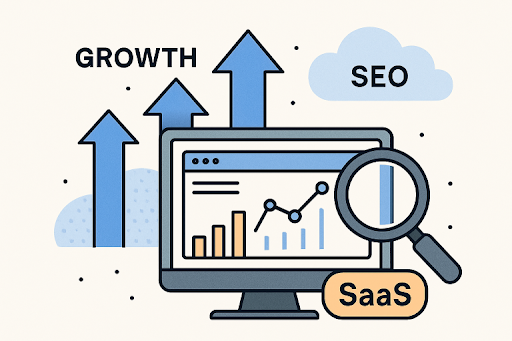In a world where almost everything from conversations to banking happens online, the safety of our digital data is more important than ever. Yet, avoid data breaches continue to quietly affect individuals and businesses every day. Thesedata breaches often occur without warning, and their impact can be deeply personal ranging from identity theft to financial loss. But here’s the good news: protecting your data doesn’t need to feel overwhelming or overly technical. With a few thoughtful habits, you can create a much safer digital space for yourself and those around you. Let’s walk through eight gentle, yet powerful ways to help prevent data breaches before they begin.
1. Choose Strong Passwords and Handle Them with Care
Passwords are your first line of defense. Try to avoid using the same password across multiple accounts, as this can quickly lead to multiple avoid data breaches if one account is compromised. Instead, opt for strong, unique combinations of letters, numbers, and symbols. Using a password manager can take the pressure off your memory while helping you stay organized. It’s also wise to update passwords occasionally, especially on important accounts like your email or banking apps.
2. Keep All Software Updated Without Delay
It’s tempting to delay updates when you’re in the middle of something, but those updates often fix vulnerabilities that hackers are waiting to exploit. Whether it’s your smartphone, laptop, or even your browser, each update brings fresh layers of protection. Enabling automatic updates is a simple way to make sure you’re always covered even when you’re busy or distracted.
3.Be Cautious on Public Wi-Fi Networks
Public Wi-Fi feels convenient, especially in coffee shops, airports, or malls but it’s not always safe. These networks can be easy targets for hackers looking to intercept data like passwords or credit card information. If you need to access sensitive accounts while using public Wi-Fi, it’s best to use a trusted VPN (Virtual Private Network). This adds a layer of encryption to your connection, making it much harder for anyone to see what you’re doing online.
4. Approach Emails and Links with Extra Care
Cybercriminals have become clever in designing emails that look trustworthy but carry dangerous links or attachments. This technique, called phishing, is responsible for a large number of avoid data breaches. Always take a moment to verify the sender, especially if the message seems urgent, emotional, or slightly “off.” When in doubt, go directly to the official website or app instead of clicking the link in the email.
5. Turn on Two-Factor Authentication
Two-factor authentication adds a second layer of protection to your accounts. It might be a code sent to your phone or a prompt on an authentication app. Even if someone gets your password, they won’t be able to access your account without this second step. Most major platforms like Google, Facebook, Instagram, and banking apps offer this option. It’s a small extra step that offers powerful peace of mind.
6. Limit the Personal Information You Share Online
It’s natural to want to share moments from your life online, but try to avoid data breaches giving away too much personal data especially things like your full birthdate, home address, or even your location in real time. Hackers often use small bits of information to guess passwords, create fake profiles, or answer security questions. The less data you make public, the safer your identity remains.
7. Keep an Eye on Your Account Activity
Taking a few minutes each week to review your account history can make a huge difference. Look out for logins from unknown locations, changes you didn’t make, or unfamiliar transactions. Many platforms offer security alerts to notify you of suspicious activity. Turning these alerts on can help you take action quickly if something seems off.
8. Encourage a Culture of Digital Awareness
Whether you’re part of a workplace, a team, or a family, data safety works best when everyone is on the same page. Gently encouraging those around you to update their passwords, avoid risky links, or enable security features creates a shared layer of protection. You don’t need to be an expert just sharing simple tips and reminders can help others stay protected too.
Conclusion
Preventing avoid data breaches isn’t about living in fear it’s about creating small, intentional habits that protect your digital space. Just like locking your front door at night, taking these steps brings comfort and confidence. In this fast-moving digital world, a little awareness goes a long way in keeping what matters most safe.
FAQs about avoid data breaches
Q1: What is a data breach in simple terms?
A data breach happens when sensitive information like passwords, emails, or financial details is accessed or shared without permission. It often results from weak security or cyberattacks.
Q2: Can regular internet users really prevent data breaches?
Yes, absolutely. Simple actions like using strong passwords, avoiding suspicious emails, and updating software regularly can greatly reduce the risk of a data breach even for everyday users.
Q3: How do I know if my data has been breached?
You might receive alerts from your bank, email provider, or security apps if something unusual happens. You can also use trusted online tools to check if your email or phone number has been part of a breach.
Q4: What is the safest way to use public Wi-Fi?
The safest way is to avoid logging into sensitive accounts while on public Wi-Fi. If you must use it, connect through a VPN, which adds a layer of security and helps keep your data private.
Q5: What makes two-factor authentication important?
Two-factor authentication adds an extra step to logins, which makes it much harder for someone to access your account even if they know your password. It’s a simple yet powerful layer of protection.











